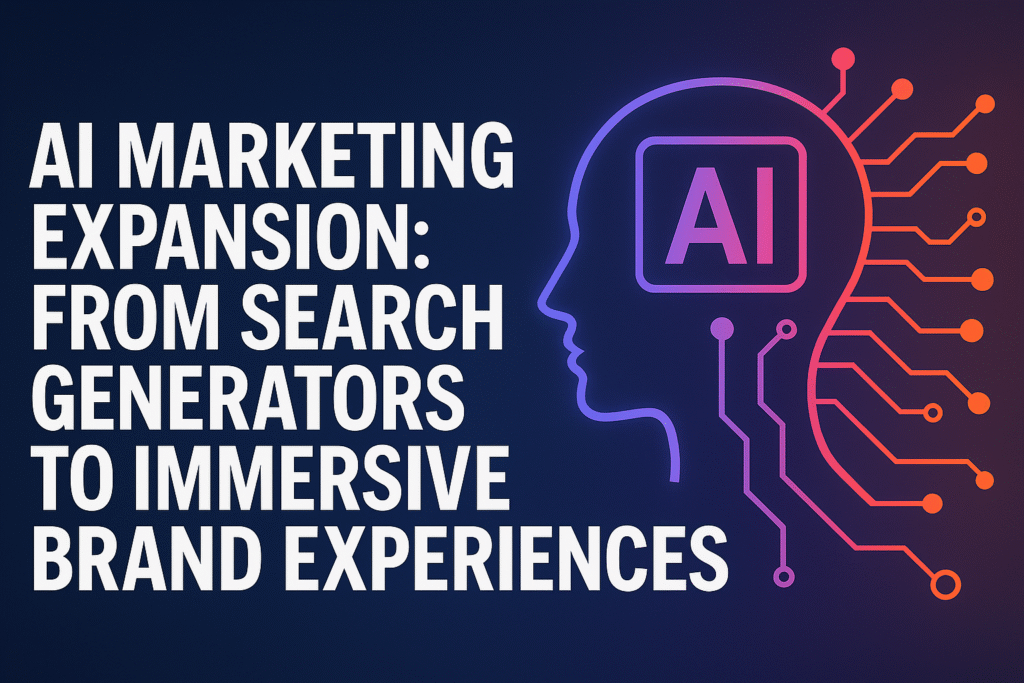Generative AI is pushing past the early adoption phase, embedding itself deeper into the platforms that power both marketing execution and customer experience. The expansion of Google’s Search Generative Experience (SGE) into over 120 new countries marks a milestone in AI’s reach, reshaping how search queries are answered and how brands position themselves to be found. This is more than just a geographic rollout; it is a shift toward AI-mediated discovery, where rich, conversational responses and context-specific recommendations influence the customer journey from the first click.

B2B brands now face an environment where search visibility is no longer about keyword matching alone. Early adopters are restructuring content to align with SGE’s preference for clearly organized, authoritative sources — creating semantic topic clusters, using structured data to make content easier for AI to summarize, and prioritizing comprehensive yet concise answers to common questions. This is not just about ranking higher, but about becoming the most referenced answer in an AI-generated snapshot. In B2C, the shift favors brands that integrate product storytelling into search-friendly formats. A lifestyle brand, for example, can pair product descriptions with usage guides and visual assets so SGE surfaces them as part of an answer, not just as an isolated link.
HubSpot’s October releases continue the march toward AI-assisted marketing automation, with new features that allow teams to build campaigns faster, analyze performance in real time, and optimize messaging across channels. B2B marketing operations benefit from AI-powered predictive lead scoring and automated follow-up sequences that reduce lag between customer action and brand response. For B2C, AI personalization capabilities make it possible to adjust offers and creative on the fly, increasing relevance and conversion potential during peak seasons.
Meta’s AI Studio, with its launch of branded AI characters, opens an entirely different avenue for engagement — one where customers interact with personas that can provide product recommendations, answer questions, and even entertain. For B2B, this could mean creating a virtual trade show host that guides prospects through a product portfolio; for B2C, it’s an opportunity to deliver customer service and brand storytelling in a way that feels immediate and human-like, without the limitations of scripted chatbots.
Runway’s Gen-4 text-to-video capabilities extend AI’s creative reach, giving marketers a way to generate high-quality video assets without traditional production overhead. A B2B company could quickly produce explainers or thought-leadership segments; a B2C brand could launch social-ready product demos in multiple variations for A/B testing. This is part of a broader trend — AI as a direct enabler of high-volume, high-quality asset generation that keeps campaigns fresh without overextending creative teams.
Factics emerge clearly in this convergence: AI-driven search requires brands to optimize for clarity and authority (Fact), which means investing in structured content and schema markup (Tactic). AI marketing automation tools reduce response times and increase campaign personalization (Fact), so brands should configure behavioral triggers that instantly adapt messaging to customer actions (Tactic). Creative AI tools like Runway expand asset production capacity (Fact), enabling brands to maintain always-on campaigns with regular creative refreshes (Tactic). The KPIs to watch include search snapshot inclusion rates, AI-personalized conversion lifts, average creative production cycle time, and engagement deltas on AI-generated versus traditional content.
Best Practice Spotlight
Flatline Agency – Klaviyo AI Features for Predictive E-Commerce Marketing
Undated (accessed before Nov 2023, content consistent with 2023 updates) – Flatline Agency – Klaviyo AI features every eCommerce brand should know – https://www.flatlineagency.com/blog/klaviyo-ai-features/
Klaviyo’s AI tools empower e-commerce brands to act on predictive insights. Using purchase and engagement data, brands can identify high-value customers for VIP access and detect at-risk customers for win-back campaigns before they disengage. These capabilities allow real-time adjustments to offers and communications, increasing customer retention and revenue potential without requiring significant manual segmentation.
Creative Consulting Concepts
B2B – The Conversational Trade Show Floor
Challenge: A SaaS provider wants to replicate trade show engagement without the expense of physical events.
Execution: Using Meta AI Studio, the company creates a branded AI character that acts as a product demo host, guiding visitors through features, case studies, and integration options. AI-triggered follow-ups send tailored resources based on the visitor’s interactions.
Expected Outcome: Lead qualification time decreases by 20%, and demo-to-proposal conversion rates increase by 15% due to more personalized follow-up.
Pitfall: Over-automation can make interactions feel impersonal; maintaining a human escalation path is critical.
B2C – The Dynamic Holiday Offer Engine
Challenge: A direct-to-consumer brand struggles to keep holiday offers relevant across a wide customer base.
Execution: Klaviyo’s predictive AI segments customers by purchase likelihood and past behavior. Offers, product bundles, and creative assets generated via Runway’s Gen-4 adapt in real time based on recipient behavior and inventory updates.
Expected Outcome: Conversion rates lift by 18%, and cart abandonment rates drop by 12% compared to static campaigns.
Pitfall: Without monitoring, rapid-fire offer changes could lead to inconsistent brand tone or conflicting promotions.
Non-Profit – Mission Storytelling in Motion
Challenge: An international NGO needs to produce emotionally compelling donor content but lacks video production resources.
Execution: Runway Gen-4 creates short-form video stories from supporter interviews and event footage. AI captions and translations make the content accessible globally, while predictive email tools target the stories to donor segments most likely to engage.
Expected Outcome: Donation response rates increase by 10% and video engagement rates rise by 25% in targeted regions.
Pitfall: AI-generated visuals must be vetted to ensure accuracy and alignment with the organization’s values.
References
–Flatline Agency. (n.d.). Klaviyo AI features every eCommerce brand should know. Retrieved from
-Google. (2023, November 8). Generative AI in Search expands to more than 120 new countries and territories.
–GPO. (2023, October 2). How Google’s SGE impacts SEO and what you should do.
-HubSpot. (2023, October 18). HubSpot’s October 2023 releases: The manager’s guide. Retrieved from
–Meta. (n.d.). AI Studio.
-Runway. (n.d.). Introducing Runway Gen-4.
Leave a Reply
You must be logged in to post a comment.